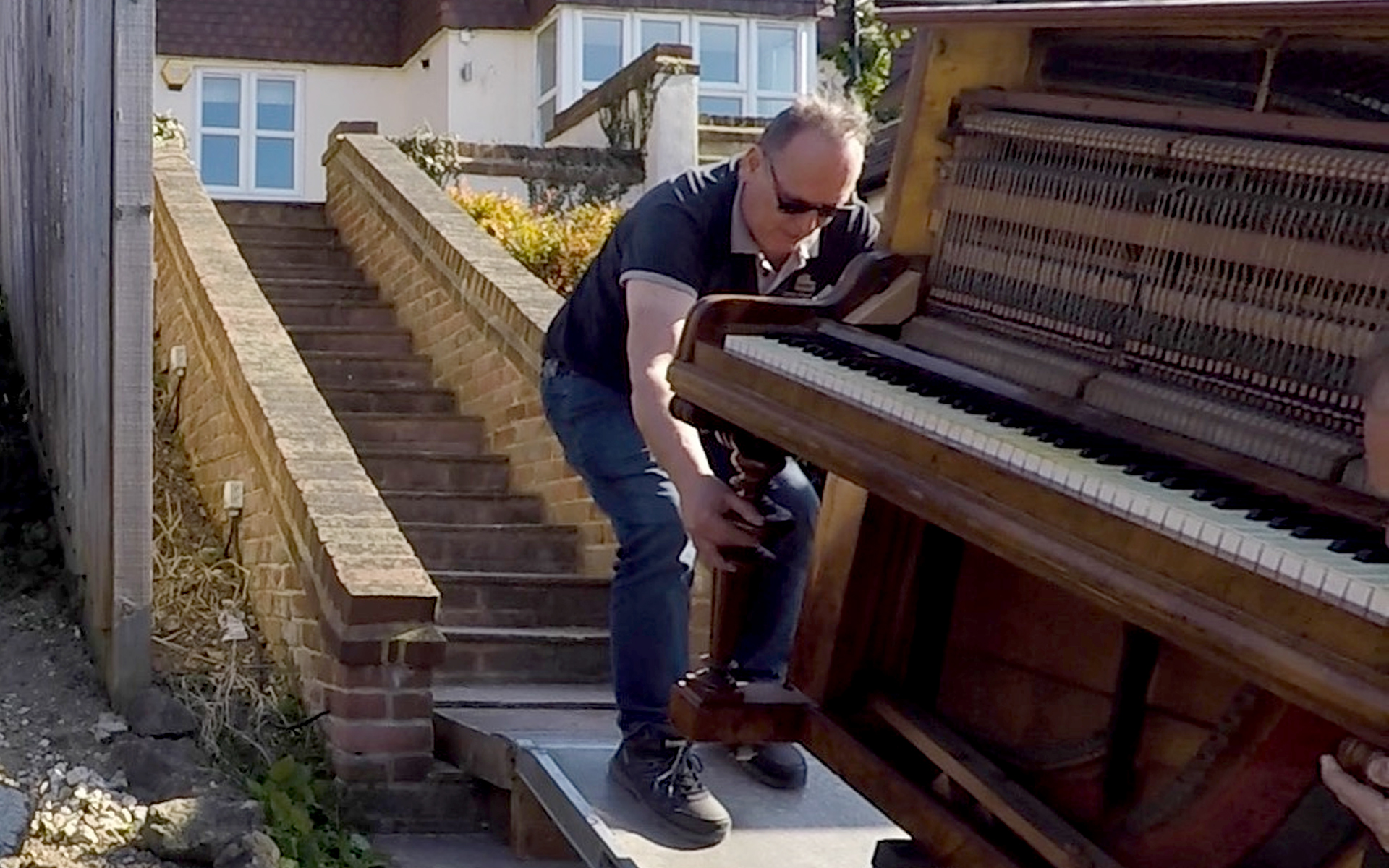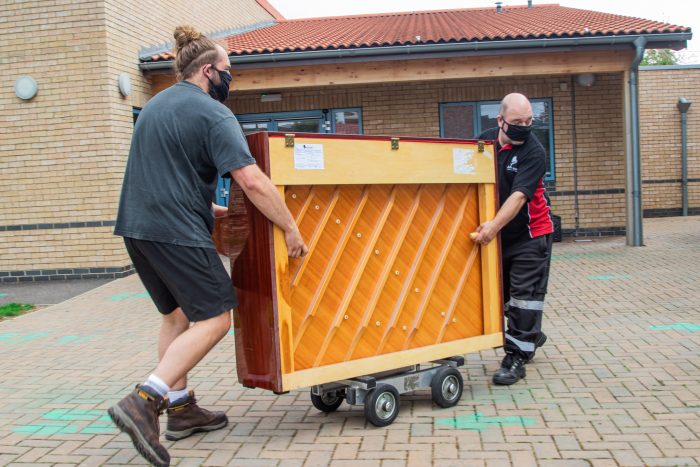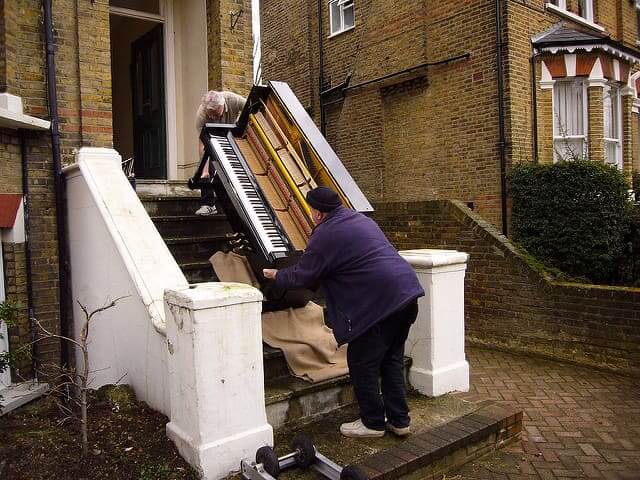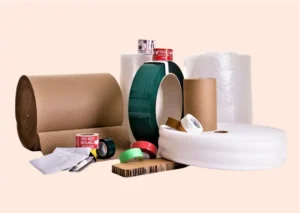Table of Contents
- 1 Your Easy Guide to DIY Piano Moving
- 2 Step 1: Getting Prepared
- 3 Step 2: Securing the Piano for Transport
- 4 Step 3: Moving the Piano Into the Moving Vehicle
- 5 Step 4: Unloading and Positioning the Piano at Its New Location
- 6 Navigating Common DIY Piano Moving Challenges
- 7 Why Sometimes ‘Contact Us’ Might Be The Best Decision
- 8 FAQs About DIY Piano Moving
- 9 Author

Moving a piano is no small feat, and doing it yourself requires more than just muscle—it requires planning, the right equipment, and a good dose of know-how. But don’t worry, I’ve got your back. Let’s make sure your piano gets to its new home safe and sound.
Key Takeaways
-
Assess the piano and the path of the move before beginning.
-
Gather necessary moving supplies, including a piano dolly, straps, and padding.
-
Enlist a team of helpers to ensure safety and efficiency.
-
Learn the proper techniques for lifting and moving a piano to avoid injury and damage.
-
Consider contacting us for expert advice or assistance with challenging aspects of the move.
Moving a piano by yourself can be daunting, but with the right approach and tools, it’s definitely doable. Remember, safety is paramount—not just for the piano but for everyone involved in the move. So, let’s roll up our sleeves and get started!
Your Easy Guide to DIY Piano Moving
First things first, you’ve got to get your head in the game. Moving a piano isn’t like shifting a bookshelf. Pianos are heavy, unwieldy, and incredibly delicate on the inside. But with the right mindset and preparation, you can move your piano without a hitch.
The Right Mindset for a Successful Move
It’s all about being cautious and methodical. Rushing can lead to mistakes, and with something as valuable as a piano, that’s the last thing you want. So, take a deep breath, and let’s focus on making this move a smooth one.
Understanding Your Piano’s Needs
Different pianos have different needs. An upright piano, for example, requires different handling than a grand piano. Know your instrument’s particular requirements before you start the moving process. This isn’t just about the weight—it’s about protecting the intricate inner workings that make your piano sing.
Preparing Your Home for the Move
Before the piano can even budge, you need to prepare the path it will take out of your home. This means measuring doorways, clearing obstacles, and ensuring there’s a clear, safe path to the moving vehicle. The last thing you want is a surprise step or a too-narrow doorway when you’re mid-move.
Step 1: Getting Prepared
Preparation is key to a successful DIY piano move. You’ll need to gather materials and plan each step before you even touch the piano. This isn’t a spur-of-the-moment operation—it’s a well-choreographed dance.
Gathering Your Materials
Here’s what you’ll need to move your piano safely:
-
A piano dolly capable of supporting the weight of your piano.
-
Padding and blankets to protect the piano’s finish.
-
Locking piano belt to keep the lid and keyboard secure.
These items are crucial for protecting your piano and ensuring it doesn’t get damaged during the move. Don’t skimp on these—your piano’s future tune depends on it.
Enlisting Your Moving Crew
You’re going to need a team to help you move your piano. This isn’t a solo gig. Recruit strong, reliable friends or family members to assist. Make sure everyone knows their role and is comfortable with the weight they’ll need to handle. Communication and teamwork are vital here.
-
Assign specific tasks to each team member.
-
Discuss the move’s path and any potential challenges.
-
Ensure everyone is wearing appropriate clothing and footwear for the move.
It’s all hands on deck for this one. Make sure your team is ready and willing to follow your lead.
Protecting the Piano Keys and Pedals
Before you start moving, you need to protect the delicate parts of your piano. The keys and pedals are particularly vulnerable to damage. Here’s how to shield them:
-
Close and lock the keyboard lid to protect the keys.
-
Wrap the pedals in padding to prevent scratches and dents.
-
Ensure the piano is not resting on its wheels, which can cause damage during the move.
These steps will help keep your piano in top playing condition throughout the move.
And remember, if you’re feeling overwhelmed at any point, don’t hesitate to Contact Us for advice or assistance. We’re here to help make sure your piano move is as smooth as possible.
Once you’ve got your piano wrapped up tight and your team briefed, it’s time to move on to the nitty-gritty of the move. It’s crucial to be gentle and precise. Any sudden movements or bumps can cause internal damage to the piano, which might not be visible from the outside but can wreak havoc on the sound and tuning.
Navigating Through Tight Spaces
Maneuvering a piano through hallways and doorways requires strategy. You’ve got to think two steps ahead:
-
Remove doors from their hinges if necessary to allow for more space.
-
Plan your route to avoid sharp turns and narrow corridors.
-
Communicate constantly with your team, so everyone knows when to push, pull, or pivot.
It’s like a dance, with everyone moving in sync to get that piano through tight spots without a scratch.

Step 2: Securing the Piano for Transport
With the piano on the dolly, it’s time to secure it for transport. This step is vital to prevent any movement that could lead to damage during the trip.
Locking Down the Lid and Parts
Make sure the piano lid is closed and locked. If your piano doesn’t have a lock, use straps to keep it shut. This will protect the keys and internal mechanics. Then, take the time to secure any loose parts that could move or open during transport.
Choosing and Positioning the Dolly
Select a dolly that can handle the weight of your piano. Position the dolly in the center of the piano’s base for balance, and then secure the piano to the dolly with moving straps. This is critical to ensure the piano doesn’t slip off while you’re navigating your way to the moving vehicle.
Step 3: Moving the Piano Into the Moving Vehicle
Getting the piano into the moving vehicle is one of the most challenging parts of the move. You’ll need a ramp and a few strong helpers for this.
Techniques for Loading the Piano Safely
Here’s how to get your piano onto the truck without any mishaps:
-
Roll the piano (still on the dolly) up the ramp and into the truck.
-
Keep the piano in an upright position to prevent strain on the inner mechanics.
-
Use moving straps to secure the piano to the side of the truck, preventing any movement during transport.
Securing the Piano in the Vehicle
Once the piano is in the truck, it’s not going anywhere—if you’ve secured it properly. Make sure it’s snug against the side of the truck with no room to roll or shift. If you’re unsure about this step, this might be a good time to Contact Us for some professional advice.
Step 4: Unloading and Positioning the Piano at Its New Location
You’ve made it to the new location—congratulations! But the job’s not done yet. Now you need to get the piano out of the truck and into its new spot without undoing all your hard work.
Strategic Unloading Tactics
Reverse the loading process. Use the ramp to gently roll the piano down from the truck, keeping it on the dolly and under control at all times. Remember, slow and steady wins the race.
Final Adjustments and Tuning
Once the piano is in its new location, you can take it off the dolly. Place it in its final position and remove all the padding and straps. You’ll likely need to have it tuned after the move, as even the smallest jostle can affect a piano’s sound.
Even with the best planning, you might run into some unexpected challenges. Here’s how to handle them:
Addressing Weight Distribution Concerns
Pianos are top-heavy, and their weight isn’t distributed evenly. Use your team to balance the load as you move, especially when navigating stairs or slopes. Always keep the piano upright to avoid putting stress on the internal components.
Dealing with Stairs and Elevators
Stairs can be a piano mover’s nightmare, but with enough hands and careful coordination, you can conquer them. If you’re using an elevator, make sure it’s large enough to fit the piano and that it can handle the weight. When in doubt, take the stairs—or better yet, call in the pros.
Moving a piano on your own is a big undertaking, but with these tips and a little elbow grease, you can do it safely and efficiently. And if at any point you feel out of your depth, remember that we’re just a click away. Contact Us for assistance or advice on your DIY piano move. We’re here to help you ensure a safe home transition for your beloved instrument.
When it comes to DIY piano moving, even the most independent of us might reach a point where we question our decision. It’s essential to know when it’s time to step back and let the experts take over.

Why Sometimes ‘Contact Us’ Might Be The Best Decision
There are moments in every big task when we must evaluate our limits. Moving a piano is one of those tasks where the stakes are high, and the margin for error is low. While the satisfaction of doing it yourself is undeniable, the risks involved can sometimes outweigh the rewards.
That’s why it’s crucial to recognize when it’s time to call in the professionals. Your piano is not just furniture; it’s a finely tuned instrument and, for many, a cherished piece of their home. Professional movers have the expertise, equipment, and insurance to ensure your piano is moved without incident.
When to Recognize You Need Professional Help
Here are a few signs that you might need to reach out for professional assistance:
-
You’re not confident about moving the piano without causing damage.
-
You don’t have the necessary equipment or enough helpers.
-
The move involves complex challenges like stairs, elevators, or long distances.
Remember, it’s okay to ask for help. It’s better to be safe than sorry, especially when it comes to something as valuable as your piano.
Benefits of Professional Piano Movers
Opting for professional piano movers comes with several benefits:
-
They have the experience to handle unexpected challenges that may arise during the move.
-
They’re equipped with specialized tools and vehicles designed for moving pianos safely.
-
They carry insurance that can provide peace of mind and protect against the financial risk of damage.
If you’re at a crossroads and considering professional help, don’t hesitate to Contact Us. We can guide you through the process or take on the heavy lifting for you.
|
Factor |
Piano Moving Company |
DIY |
|---|---|---|
|
Time |
Professional movers can save time, especially for long-distance moves. |
DIY moves can take more time, especially for loading and unloading. |
|
Cost |
On average, moving companies charge $60 to $80 per hour per mover. The cost can range from $150 to $800 for local moves and $500 to $2,000 for long-distance moves. |
DIY moves can be cheaper, but you need to factor in the cost of packing materials, fuel, insurance, and moving equipment. |
|
Safety |
Professional movers are experienced and well-equipped, reducing the risk of damage or injury. |
DIY moves can be riskier, as you may not have the necessary equipment or experience to handle a piano safely. |
|
Convenience |
Professional movers handle the entire process, from packing to unloading. |
DIY moves require you to handle all aspects of the move. |
|
Stress |
Professional movers can reduce stress by handling the heavy lifting and logistics. |
DIY moves can be more stressful, as you are responsible for all aspects of the move. |
In summary, hiring a professional piano moving company can save time and reduce the risk of damage or injury, but it can be more expensive than a DIY move. DIY moves can be cheaper, but they require more time and effort, and there is a higher risk of damage or injury. Ultimately, the choice between a professional piano moving company and a DIY move depends on your budget, time constraints, and comfort level with handling a piano.
FAQs About DIY Piano Moving
How Do I Know If My Piano Can Be Moved By Myself?
To determine if you can move your piano by yourself, consider the following:
-
The type and size of the piano—smaller upright pianos are generally more manageable than grand pianos.
-
Whether you have access to the right equipment, like a piano dolly and straps.
-
The number of people you have to help you with the move.
Assess your situation honestly, and if you’re unsure, it’s worth getting a professional opinion.
What Are the Risks of Moving a Piano Without Professional Help?
Moving a piano without professional help can pose several risks:
-
Potential injury to yourself or your helpers due to the piano’s weight and bulk.
-
Damage to the piano, such as scratches, broken legs, or internal harm that can affect the sound.
-
Damage to your home, like gouged floors or dented walls.
It’s important to weigh these risks before deciding to move a piano on your own.
How Can I Find Reliable Helpers for My Piano Move?
When looking for reliable helpers for your piano move, consider the following tips:
-
Ask friends or family members who are strong and have experience with moving heavy items.
-
Reach out to local community groups or forums to find volunteers.
-
Consider hiring local labor-only moving services to assist with the heavy lifting.
Ensure that whoever you enlist is committed and understands the importance of the task at hand.
What Kind of Truck is Best for Moving a Piano?
The best kind of truck for moving a piano is one that has:
-
Enough space to accommodate the piano without tilting or laying it on its side.
-
A lift gate or ramp for easier loading and unloading.
-
Tie-down points to secure the piano during transport.
Choose a vehicle that will keep your piano stable and secure throughout the move.

Can I Store a Piano in a Standard Storage Unit?
Yes, you can store a piano in a standard storage unit, but there are conditions to consider:
-
The unit should be climate-controlled to prevent damage from temperature and humidity changes.
-
The piano should be covered with a breathable cloth to protect it from dust and debris.
-
Ensure the storage unit is clean and free from pests that could damage the piano.
Proper storage is key to maintaining your piano’s condition over time.
For example, when Julie decided to move her cherished grand piano to her new home, she initially thought she could manage with the help of friends. However, after considering the complexity of the move and the value of her instrument, she opted to Contact Us for professional assistance. The result? A stress-free move and a piano that arrived in perfect condition.
Moving a piano on your own is a significant undertaking, but with the right preparation and knowledge, it can be done successfully. Keep these tips in mind, and you’ll be playing sweet melodies in your new home in no time. And if the task becomes too daunting, remember, professional help is just a click away. Don’t hesitate to Contact Us for support or to ensure your piano’s safe transition to its new location.



